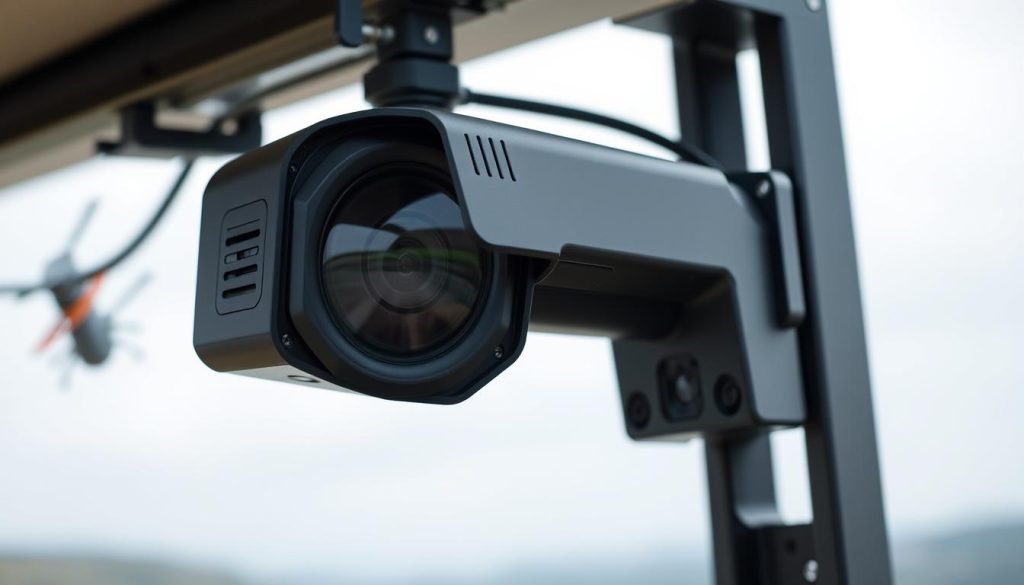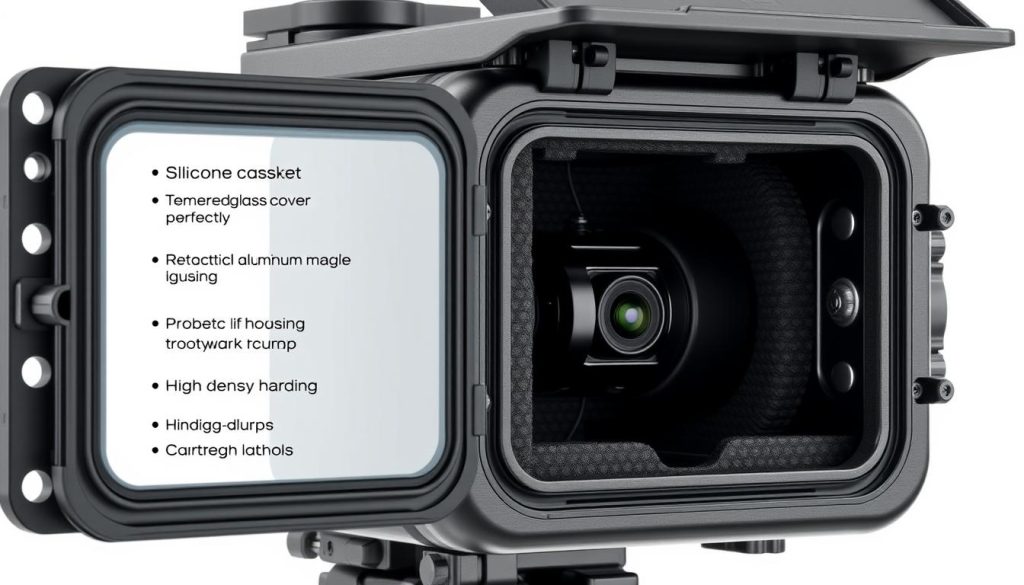Singapore’s unpredictable weather poses unique challenges for photographers. High humidity, sudden downpours, and coastal salt exposure can damage delicate equipment. Without proper protection, moisture leads to corrosion, electrical failures, and even lens mold.
Local photographers often face these issues firsthand. A single rainstorm can ruin expensive gear. But solutions exist—from affordable DIY hacks to professional-grade accessories. The right approach keeps your equipment safe without breaking the bank.
With over a decade of experience in photography, I’ve tested methods that work in tropical conditions. This guide shares practical tips tailored for Singapore’s climate. Whether shooting cityscapes or coastal views, safeguarding your gear is essential.
Key Takeaways
- Singapore’s humidity and rain demand extra protection for cameras.
- Water damage causes corrosion, electrical issues, and lens mold.
- Affordable solutions and professional gear both offer effective safeguards.
- Local photographers frequently battle weather-related equipment failures.
- Proactive measures extend the lifespan of high-value photography tools.
Why Weatherproofing Your Camera Matters in Singapore
High humidity and sudden rainstorms turn Singapore into a danger zone for unprotected cameras. With average humidity at 84%, moisture seeps into delicate electronics, while salt water spray near coastal areas compounds the risk. Ignoring these elements can lead to costly repairs or irreversible damage camera components.
The Risks of Rain and Humidity
Rainwater conducts electricity, creating short circuits in unprotected circuitry. A DSLR left exposed during an East Coast Park shoot failed within hours due to internal corrosion. Even after drying, residual moisture accelerates oxidation.
Humidity above 90% causes lens fogging, distorting images. Local repair clinics in Funan Mall report weather sealing failures account for 30% of service requests. Preventive measures cost far less than post-damage recovery.
Saltwater Damage: A Hidden Threat
Salt water corrodes metal lens mounts and degrades coatings faster than freshwater. Unlike rain, salt residues persist after drying, requiring a 48-hour desiccant treatment. One photographer’s $2,000 lens replacement underscores the severity.
Coastal shoots demand extra protection. Weather sealing alone can’t prevent salt infiltration—specialized housings or DIY barriers are essential. The right gear saves both money and memories.
Essential Gear to Protect Your Camera from Rain
Sudden tropical showers demand reliable gear to shield photography equipment from water damage. From lightweight rain covers to heavy-duty backpacks, the right tools ensure uninterrupted shoots. Singapore’s climate requires durable solutions—here’s what works best.
Camera Rain Covers: Types and Features
Nylon rain covers resist tearing during downpours, while PVC options offer rigid protection. The Ewa-Marine Rain Cape includes an optical glass port for clear shots. For budget-friendly picks under S$100:
- Altura Photo All-Weather Cover: Stretchy fabric fits DSLRs and lenses.
- OP/TECH Rainsleeve: Disposable yet effective for emergencies.
Local shops like Cathay Photo stock these, ideal for last-minute needs.
Waterproof Bags for Transport and Storage
Commuting on the MRT? The K&F Concept Backpack’s welded seams repel moisture. Key features:
- Pelican MPB25: Drainage ports expel trapped water.
- Neoprene sleeves: Protect tripod legs from salt corrosion.
Always test zipper seals—TK Foto offers in-store demos.
Lens Hoods and Weather-Sealed Accessories
A deep lens hood blocks diagonal rain, while rubberized mounts prevent moisture seepage. Pair these with silica gel packs in your bag for extra defense. For long-term camera maintenance, combine accessories with regular drying routines.
How Do I Make My Camera Weather Proof? DIY Solutions
Singapore’s downpours can strike without warning, leaving photographers scrambling for quick fixes. When professional gear isn’t handy, everyday items offer surprisingly effective protection. These budget-friendly tricks keep equipment dry without sacrificing shot quality.
Using Household Items as Temporary Covers
A plastic Ziplock bag and rubber band create an instant rain shield. Here’s how:
- Cut a hole for the lens, securing the bag’s opening around the viewfinder with a rubber band.
- Use a shower cap to cover camera lenses—stretch it over the barrel for a snug fit.
- Test freezer bags versus NTUC grocery bags; thicker plastic resists tearing.
Food container domes work as temporary shields. One photographer used a Tupperware lid during a Botanic Gardens shoot—just make sure to wipe condensation off the viewfinder.
Umbrella Techniques for Hands-Free Protection
Mounting an umbrella on a tripod frees both hands for shooting. Try these setups:
- Clamp a compact umbrella to the tripod leg using a GorillaPod.
- For street photography, attach a mini-umbrella to your strap with carabiners.
- Anti-slip grips prevent drops during one-handed adjustments.
Coastal shoots demand extra care—salt spray worsens moisture damage. Pair these hacks with silica gel packs for double defense.
Investing in Long-Term Protection

When temporary fixes aren’t enough, durable solutions become essential for safeguarding cameras in tropical climates. Proactive investments in weather sealing and specialized housings prevent irreversible damage. For professionals shooting in Sentosa’s coastal areas or monsoon seasons, the right equipment pays for itself over time.
Waterproof Camera Housings for Extreme Conditions
The Ewa-Marine U-AX Housing withstands depths up to 60ft, ideal for underwater shoots at S.E.A. Aquarium. Unlike basic covers, its pressure-resistant design blocks saltwater infiltration—a must for Singapore’s shoreline photography. Local dive shops rent housings for S$150/day, a cost-effective alternative to purchasing.
Key considerations when choosing a housing:
- Quality seals: Opt for silicone gaskets over rubber—they resist degradation in humidity.
- Lens compatibility: Ensure ports fit wide-angle lenses for Marina Bay skyline shots.
- Maintenance: Canon SG recommends gasket inspections every 6 months for optimal weather sealing.
Weather-Sealed Cameras: Are They Worth It?
While models like the Olympus OM-D E-M1 Mark III excel in lab tests, real-world performance varies. The Sony a7R II’s partial sealing fails during prolonged downpours, requiring additional covers. Compare features before you invest:
- Fujifilm X-T4: 80+ weather-resistant points, ideal for urban street photography.
- Nikon D6: Military-grade sealing, but heavier for travel.
Second-hand sealed cameras retain 30% higher resale value in Singapore’s market. Pair them with insurance covering water damage—most policies exclude “acts of nature” without proof of weather sealing.
Maintaining Your Camera After Exposure to Moisture
Even with precautions, moisture can still threaten photography equipment in Singapore’s climate. Quick action minimizes damage camera components and saves repair costs. Follow these steps to protect your gear.
Immediate Steps to Take If Your Gear Gets Wet
Remove the battery immediately to prevent short circuits. Wipe external water with a microfiber cloth, avoiding power buttons. For coastal shoots, rinse salt residues with distilled water—tap water worsens corrosion.
Within 60 minutes:
- Disassemble lenses and memory cards.
- Place gear in a bag with silica gel packs (not rice—it’s less effective).
- Visit Sim Lim Square’s Camera Hospital if error messages appear.
Cleaning and Drying Your Gear Safely
After 48 hours in a dry environment, inspect for stickiness or fogging. Use approved cleaning fluids for lens contacts—DIY solutions risk coatings. Airtight boxes with humidity cards make affordable DIY dry cabinets.
“Ultrasonic cleaning restores corroded contacts, but only professionals should attempt it.”
Check the battery compartment for salt buildup. Extended drying time ensures no hidden moisture remains. For stubborn issues, TK Foto offers ultrasonic services.
Shoot Confidently in Any Weather
Monsoon season shouldn’t stop you from capturing stunning shots in Singapore. With silica gel packs, rain covers, and weather-sealed gear, you’re ready to take pictures even during downpours.
Check apps like WeatherSG for rain predictions. The Photographic Society of Singapore hosts workshops on monsoon photography—perfect for mastering reflections and moody skies.
Pack these essentials: a microfiber cloth, waterproof bag, lens hood, spare batteries, and a compact umbrella. Share your rainy-day shots with #SGWeatherProof for expert feedback.
Need personalized advice? Contact local pros at Cathay Photo for protection tips tailored to your gear. Now go take pictures—rain or shine!

